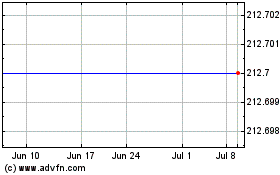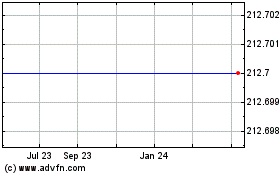Additional Proxy Soliciting Materials (definitive) (defa14a)
April 07 2017 - 4:17PM
Edgar (US Regulatory)
UNITED STATES
SECURITIES AND EXCHANGE COMMISSION
Washington, D.C. 20549
SCHEDULE 14A INFORMATION
Proxy Statement Pursuant to Section
14(a) of the
Securities Exchange Act of 1934 (Amendment No. )
|
☑
|
Filed by the Registrant
|
☐
|
Filed by a party other
than the Registrant
|
|
|
CHECK THE APPROPRIATE BOX:
|
|
☐
|
|
Preliminary Proxy Statement
|
|
☐
|
|
Confidential, For Use of the Commission Only
(as permitted by Rule 14a-6(e)(2))
|
|
☐
|
|
Definitive Proxy Statement
|
|
☑
|
|
Definitive Additional Materials
|
|
☐
|
|
Soliciting Material Under §240.14a-12
|

Aetna Inc.
(Name of Registrant as Specified In Its
Charter)
(Name of Person(s) Filing Proxy
Statement, if other than the Registrant)
|
PAYMENT OF FILING FEE (CHECK THE APPROPRIATE
BOX):
|
|
☑
|
|
No fee
required.
|
|
☐
|
|
Fee computed on table below per Exchange Act Rules
14a-6(i)(1) and 0-11.
|
|
|
|
|
1)
Title of each class of securities to which transaction
applies:
|
|
|
|
|
2)
Aggregate number of securities to which transaction applies:
|
|
|
|
|
3)
Per unit price or other underlying value of transaction computed
pursuant to Exchange Act Rule 0-11 (set forth the amount on which the
filing fee is calculated and state how it was determined):
|
|
|
|
|
4)
Proposed maximum aggregate value of transaction:
|
|
|
|
|
5) Total fee paid:
|
|
☐
|
|
Fee paid previously with
preliminary materials.
|
|
☐
|
|
Check box if any part of the fee is
offset as provided by Exchange Act Rule 0-11(a)(2) and identify the filing
for which the offsetting fee was paid previously. Identify the previous
filing by registration statement number, or the Form or Schedule and the
date of its filing.
|
|
|
|
|
1)
Amount previously paid:
|
|
|
|
|
2)
Form, Schedule or Registration Statement No.:
|
|
|
|
|
3)
Filing Party:
|
|
|
|
|
4) Date
Filed:
|
Aetna proxy statement
available; executive compensation explained
Aetna’s 2017 proxy statement
is now available. The proxy statement is a required notice distributed to all
Aetna shareholders in advance of the annual meeting of shareholders. It is also
available to the general public. The proxy statement provides information on
matters subject to a vote of the shareholders and includes certain disclosures
mandated by the Securities and Exchange Commission (SEC). Among those
disclosures is a detailed presentation of the compensation of Aetna’s most
highly compensated executives. The SEC calls this group the “Named Executive
Officers.” Given the public’s interest in executive pay and administrative costs
of health insurers, we anticipate the proxy statement may receive media
attention. You may also have questions of your own. The following explains some
key aspects of our executive compensation philosophy.
|
●
|
Executive
compensation is tied to performance and varies from year-to-year.
Executive pay varies significantly
each year, increasing or decreasing in value according to how well the
company and individual business units perform. Aetna’s overall financial
performance in 2016 was strong and successful based on a number of
internal and external metrics, including strong shareholder returns, solid
earnings, strong revenue, meeting medical membership projections, a
pre-tax operating margin in high single digits, consistent total Company
expense ratio, improvement of our adjusted operating expense ratio, and
progress on strategic initiatives. As a result, the annual bonus plan was
funded at approximately 114.7 percent of target, and executive
compensation for 2016 reflected our strong performance last year. Bonus
amounts for individual executives varied according to the performance of
their own organizations; and Aetna’s overall bonus payout to all employees
for 2016 exceeded $346 million.
|
|
|
|
|
●
|
Aetna’s executive
compensation philosophy reinforces the importance of delivering value to
our shareholders
. The
largest component of our top executives’ pay is multi-year equity-based
compensation, which aligns the interests of our executives with those of
our shareholders. The value of Aetna’s equity-based compensation depends
on Aetna’s stock price and whether Aetna achieves defined financial goals
set at the time of the grant. The value of this compensation is “at risk” because it is directly subject to changes in the price of Aetna stock, and a portion of it will be paid only if performance goals are achieved or exceeded. In other words, executive compensation has some elements of
certainty (base salary) and other elements that represent potential, but
not guaranteed value.
|
Aetna’s performance goals,
along with the salaries and variable pay for Aetna’s most senior leaders, are
reviewed and approved each year by the Aetna Board of Directors’ Committee on
Compensation and Talent Management. Our executives’ compensation is designed to
be competitive with that of other large health insurers as well as other
companies we compete against for talent and capital. Ultimately, pay decisions
for senior leadership are based on the competitive environment and each
executive’s contributions toward achieving financial and other goals that are
linked to the Company’s business strategy.
Aetna (NYSE:AET)
Historical Stock Chart
From Mar 2024 to Apr 2024

Aetna (NYSE:AET)
Historical Stock Chart
From Apr 2023 to Apr 2024
